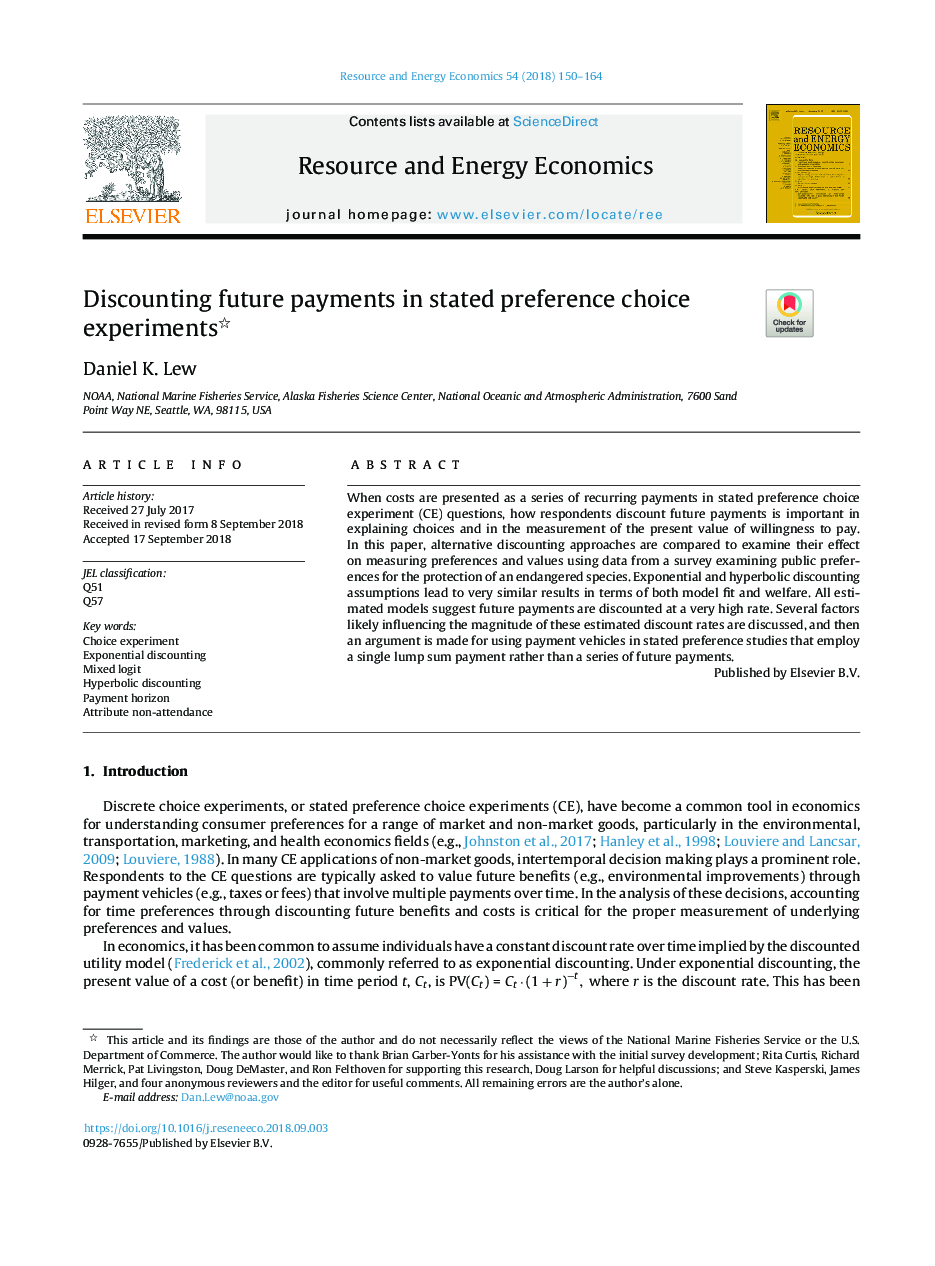| Article ID | Journal | Published Year | Pages | File Type |
|---|---|---|---|---|
| 11004946 | Resource and Energy Economics | 2018 | 15 Pages |
Abstract
When costs are presented as a series of recurring payments in stated preference choice experiment (CE) questions, how respondents discount future payments is important in explaining choices and in the measurement of the present value of willingness to pay. In this paper, alternative discounting approaches are compared to examine their effect on measuring preferences and values using data from a survey examining public preferences for the protection of an endangered species. Exponential and hyperbolic discounting assumptions lead to very similar results in terms of both model fit and welfare. All estimated models suggest future payments are discounted at a very high rate. Several factors likely influencing the magnitude of these estimated discount rates are discussed, and then an argument is made for using payment vehicles in stated preference studies that employ a single lump sum payment rather than a series of future payments.
Keywords
Related Topics
Physical Sciences and Engineering
Energy
Energy (General)
Authors
Daniel K. Lew,
